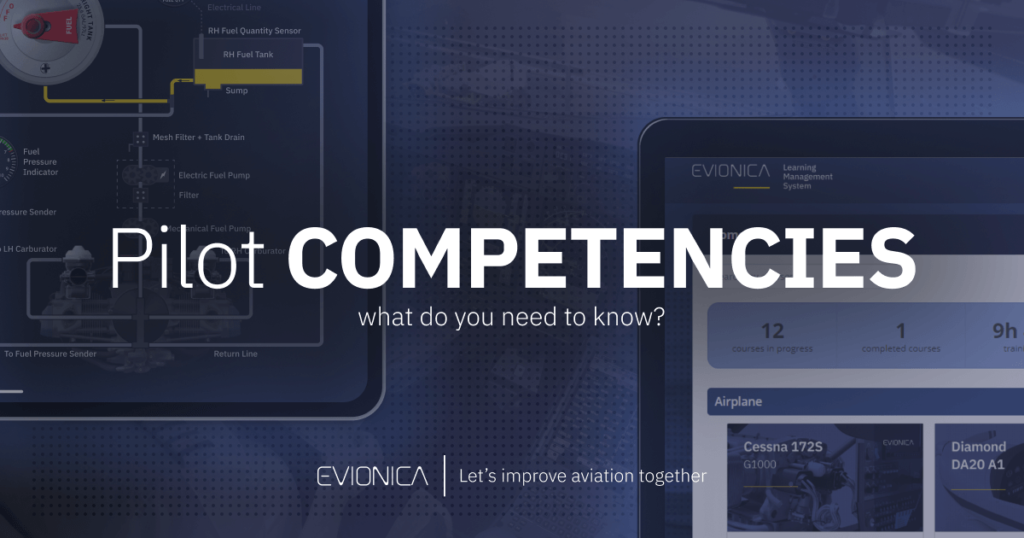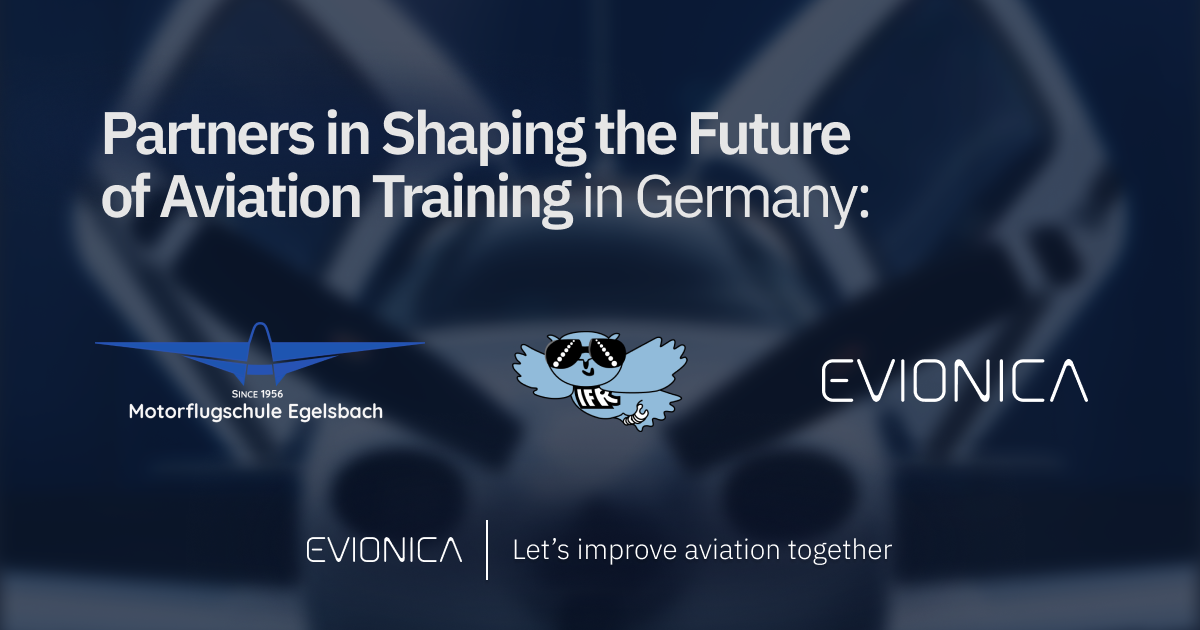Pilot core competencies to become an airline pilot
Pilot core competencies are defined by ICAO Doc 9995 as a standard set of skills and abilities that a pilot should possess to ensure safe, efficient, and comfortable flight operation. Being a pilot is a responsibility for people’s lives and operating aircraft, that is why these technical and non-technical competencies should be mastered on the highest level and then deeply assessed.
Become a highly-qualified pilot with Evionica’s online courses:
atpl(A) e-learning course
cpl(A) e-learning course
ppl(A) e-learning course
Airline recruitment teams follow these core competencies as a standard to determine whether a candidate is suitable for an airline pilot role. They are crucial to start a pilot career so practicing them is key to success. Below we have listed and explained each of the 8 competencies that future pilots should be aware of:
Application of procedures and compliance with regulations
The pilot can identify and apply procedures in accordance with published operating instructions and knows the applicable regulations. Using appropriate knowledge when necessary in a proper timely manner, a candidate is able to fly with a high degree of safety.
Pilot should have excellent communication skills
Good communication skills can be exhibited in many different ways, for example, when talking with the ATC in a clear and understandable manner, using eye contact and body language to show support for your interlocutor, or by asking relevant and effective questions. By conveying messages, verbal or non-verbal, accurately and clearly, the pilot can prevent misunderstandings and be a good team member.
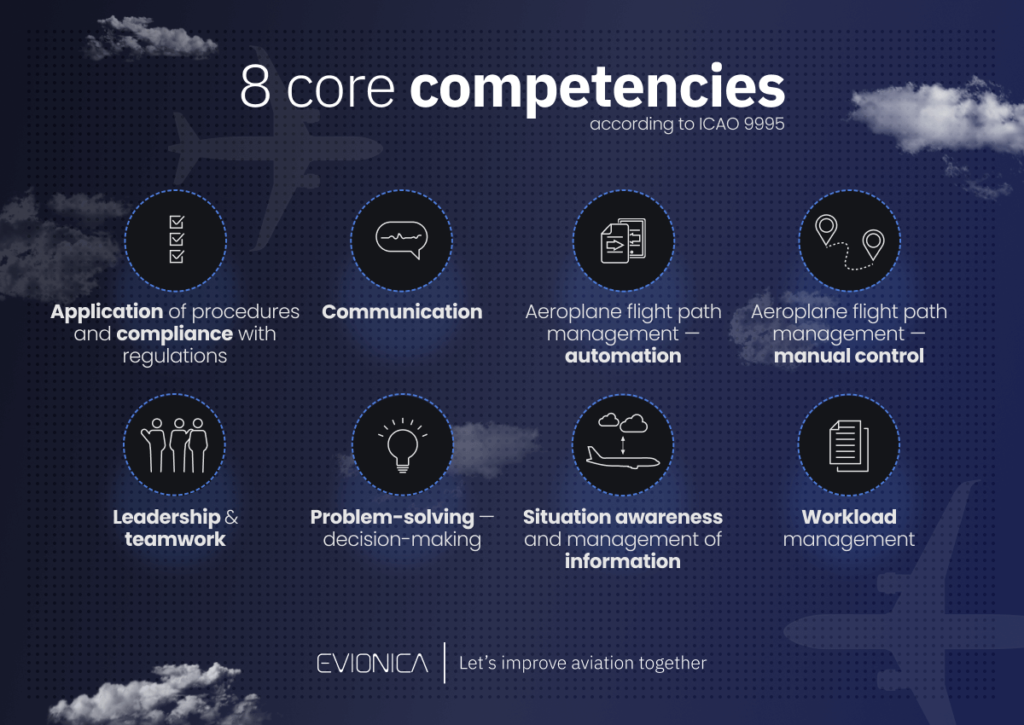
Airplane flight path management — automation
Being proficient in controlling the aircraft’s flight path through automation, including appropriate usage of flight management systems, can be difficult to comprehend at first, but it’s a part of every commercial flight in any airline. A pilot should understand how to contain the aircraft within the normal flight envelope or select the appropriate mode of automation in a timely manner while considering the phase of flight and workload.
Airplane flight path management — manual control
Controlling the airplane manually is probably one of the first qualities that come to mind when talking about pilot competencies. A pilot must manually maintain the desired flight path while managing other tasks and distractions, detect any deviations from the desired aircraft trajectory, and take immediate action. It’s an efficient skill that takes a great amount of time and self-control to perfect but ultimately leads to excellent control of the aircraft and smooth flight.
Good Crew Resource Management influences flight safety
Being a part of a flight crew comes with great responsibility, there has to be a good understanding and agreement between crew members to avoid conflicts that may lead to a dangerous situation. By creating an atmosphere in the cockpit that encourages team participation, pilots can voice their concerns, communicate intentions and give or receive relevant feedback. It is very important to remember, that good Crew Resource Management has a great impact on flight safety, and that’s why pilots should project a great deal of self-control and teamwork in all situations.
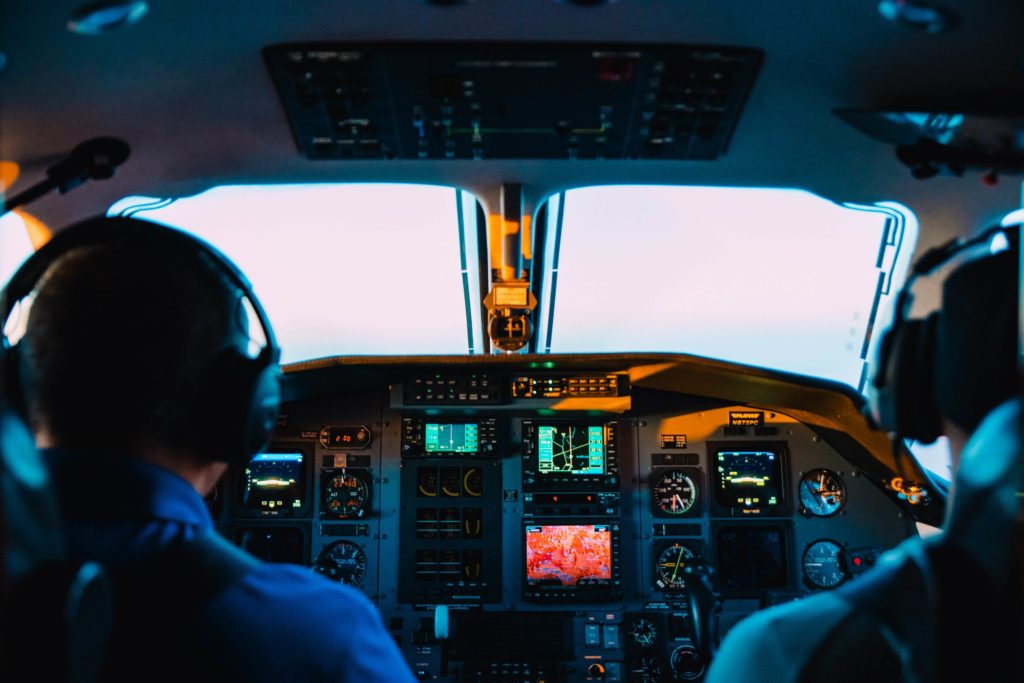
Pilot with a problem-solving attitude
This competency relates to identifying risks and resolving problems using appropriate decision-making processes. This can be achieved by, for example, effectively identifying and managing risks, setting priorities appropriately, seeking accurate and adequate information from appropriate sources, or reviewing and adapting decisions as required.
Situation awareness in every phase of the flight
Situation awareness is a skill needed in every phase of flight. By perceiving and comprehending all of the relevant information available and anticipating what could happen that may affect the operation pilots can ensure a proper level of safety. This can be done by keeping track of time and fuel, planning and staying ahead of any situation, or assessing accurately the aircraft’s vertical and lateral position and its anticipated flight path.
Workload management in the cockpit
Proper management of workload is crucial for providing a smooth workflow in the cockpit. This competency includes many different skills, but mostly focuses on being able to prioritize and perform tasks promptly. But this doesn’t mean a pilot has to make all the decisions on their own. Offering as well as accepting assistance when the workload gets overwhelming is more than acceptable since it also shows good teamwork initiative.
Also, EASA implemented one more competency, which is the Application of knowledge.
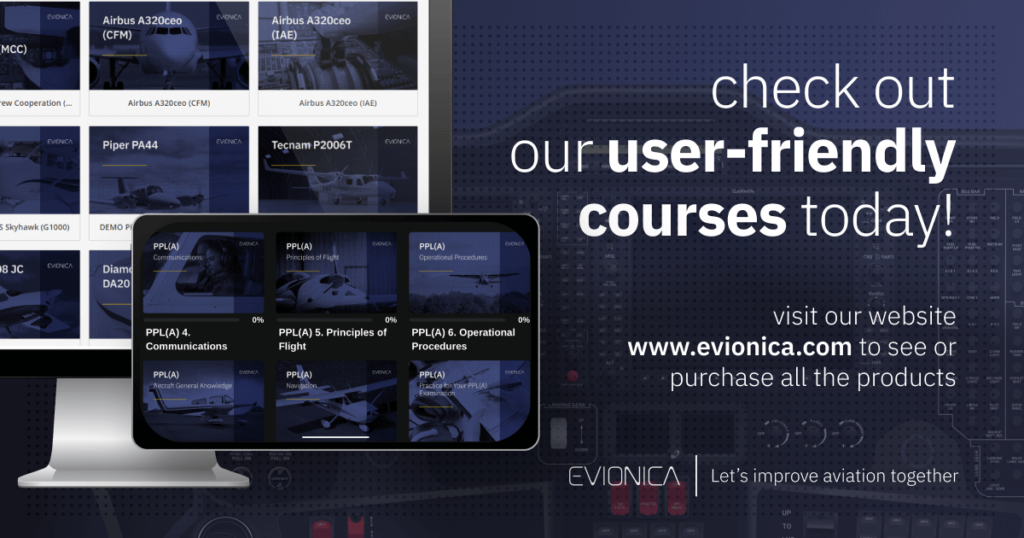
Aviation training courses provided by Evionica
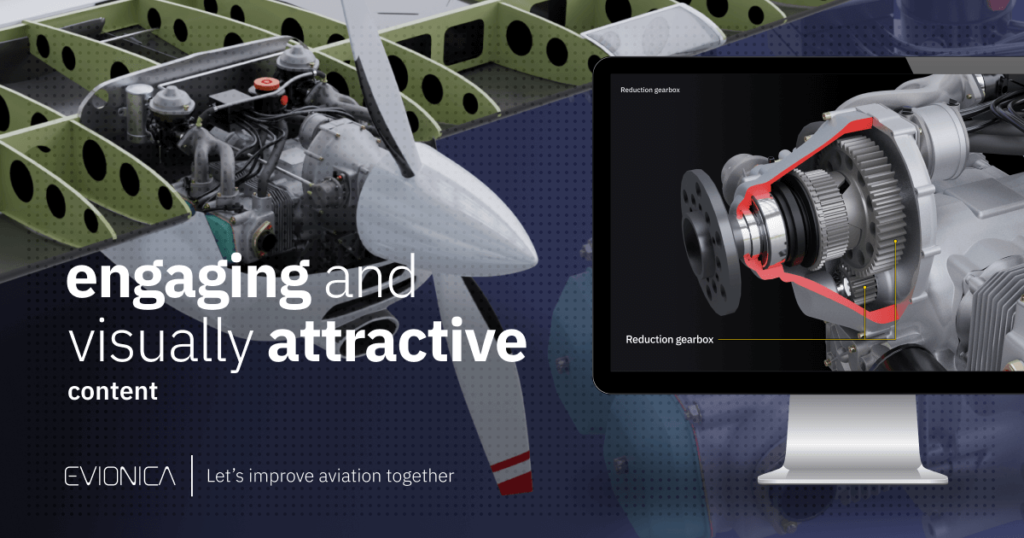
Our e-learning pilot courses are made so that they help you become a better pilot at every step of your pilot career, by implementing as many practical resources as possible.
-
3D and 2D graphics allow one to easily understand the characteristics of an aircraft during manual flight
-
Interactive slides help to broaden the understanding of automation systems in an aircraft
-
Knowledge checks after each chapter help to build practical problem-solving and decision-making skills
-
Providing knowledge in a clear and easy-to-understand manner aids visual learners to manage and store new information in an organized way
-
Always implementing up-to-date regulations which help with remembering and complying with them
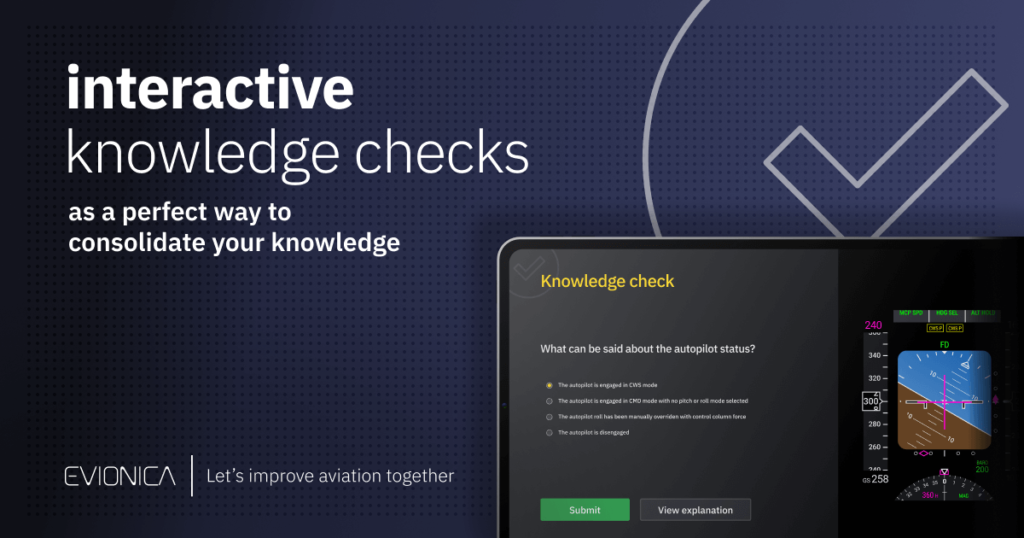
Learn more about online aviation training dedicated for Training Organizations:
Get the best Flight School's Training Package Now
Complex Flight Training from 0 to ATPL(A)
Create your package

